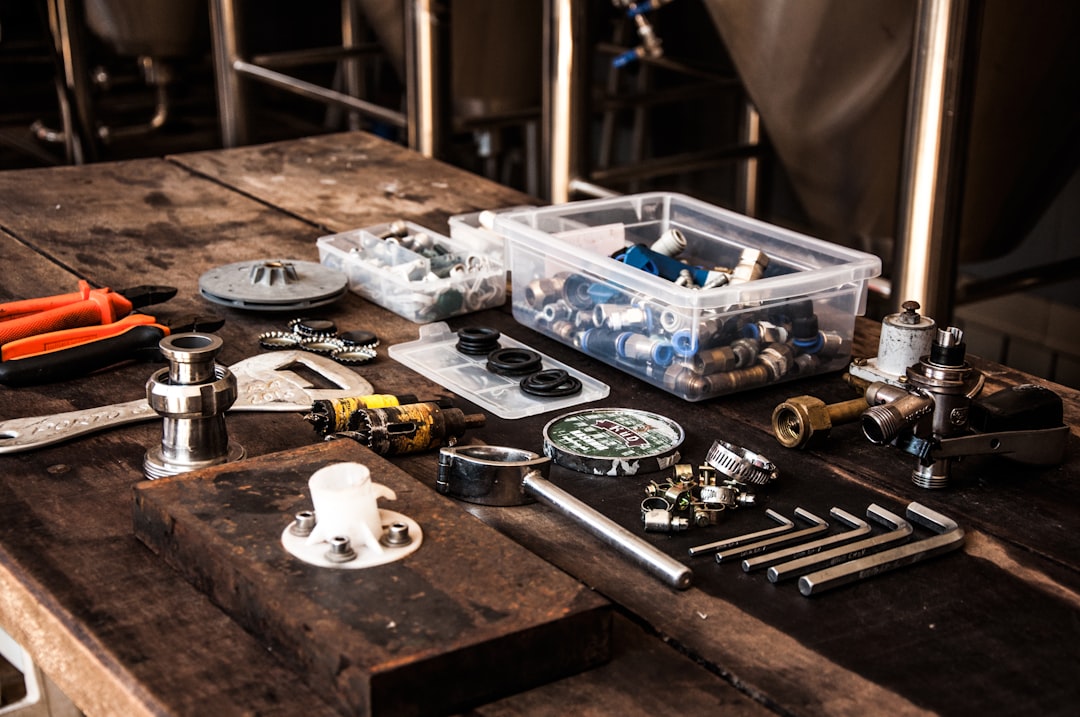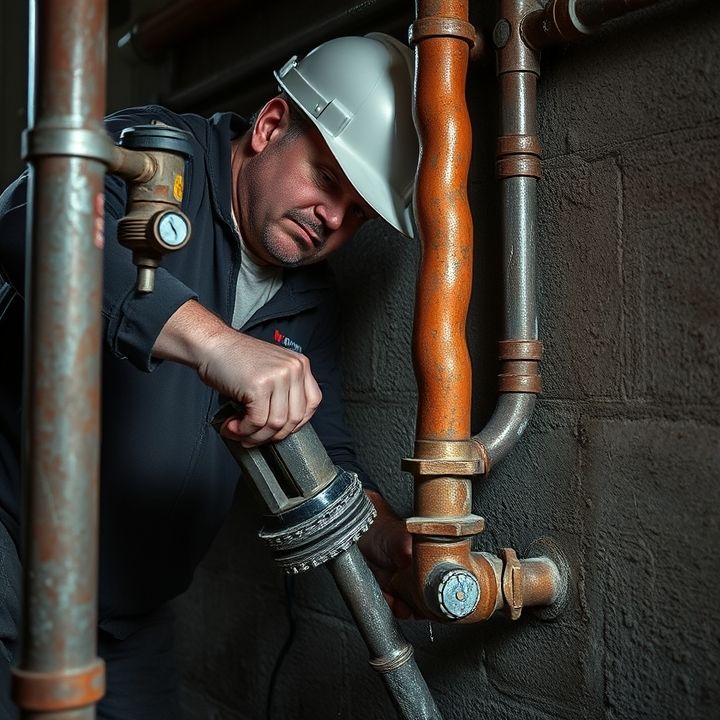Table of Contents
- Introduction
- Common signs of leaks in plumbing systems
- Methods for visual inspection of plumbing fixtures
- The role of plumbing camera inspection in leak detection
- Utilizing acoustic listening devices to find hidden leaks
- The importance of pressure testing in leak detection
- Using moisture meters to identify leak locations
- Hydro jetting service for clearing blocked lines that may hide leaks
- When to call for professional plumbing leak detection services
- Conclusion
- Frequently Asked Questions
Introduction
Imagine a quiet afternoon at home when suddenly, you notice a mysterious damp spot on the ceiling or a puddle forming under the sink. The creeping dread of plumbing leaks can be enough to send any homeowner into a tailspin. But fear not, for behind the walls and beneath the floors, skilled plumbers wield an arsenal of techniques to hunt down these elusive leaks.
In this article, we will take you on a journey into the fascinating world of leak detection. From advanced technology like thermal imaging and acoustic sensors to tried-and-true methods, you’ll discover how professionals transform chaos into clarity. Armed with insider knowledge, you’ll learn how these experts navigate through pipe networks, safeguarding your home from water waste and extensive repairs.
Join us as we unveil the secrets, techniques, and tools that turn plumbing from a mere trade into an art form, all while ensuring your home remains leak-free and functional.
Common signs of leaks in plumbing systems
Identifying leaks in plumbing systems can often be achieved by recognizing common signs that indicate an issue. One of the most evident indicators is the sound of running water when none is in use. This could suggest a hidden leak somewhere in the system. Additionally, unexpected increases in water bills can signal that water is escaping from the pipes, even if there is no visible leakage.
Another significant sign includes damp spots on walls, ceilings, or floors, which may suggest that water is seeping from pipes behind these surfaces. Mold or mildew growth in these areas is another red flag, as these fungi thrive in moist environments.
Lastly, a decrease in water pressure may also indicate a leak in the plumbing system, as the escaping water can reduce the overall pressure within the pipes. Regular inspections and being aware of these signs can help homeowners address plumbing leaks before they become significant problems.
Methods for visual inspection of plumbing fixtures
Visual inspection is one of the first methods plumbers use to detect leaks in plumbing fixtures. This method involves a careful examination of all visible components of the plumbing system, including pipes, faucets, and fixtures. Plumbers typically look for signs of water damage, such as stains on walls or ceilings, which may indicate a hidden leak.
Another aspect of visual inspection includes checking for corrosion or rust on pipes, which can signal a potential leak. Fixtures such as sinks and toilets are also closely examined for any signs of moisture accumulation or deterioration.
During the inspection, plumbers may turn on faucets and observe the water flow to detect any irregularities. They often look for pooling water around fixtures and examine the caulking and seals for cracks or gaps where water might escape.
Using a flashlight can help highlight areas that require closer scrutiny, especially in dimly lit spaces. Overall, a thorough visual inspection is crucial for identifying leaks early and effectively addressing issues before they escalate.
The role of plumbing camera inspection in leak detection
Plumbing camera inspection plays a crucial role in leak detection within plumbing systems. This technique involves sending a small, waterproof camera through the pipes to capture real-time video footage. This allows plumbers to visually inspect the interior of the plumbing system without the need for invasive digging or tearing down walls. By utilizing this technology, plumbers can easily identify the exact location and cause of leaks, such as cracks, corrosion, and blockages.
The high-resolution images and videos provide valuable insights into the condition of the pipes, making it easier to assess whether repairs or replacements are necessary. Additionally, plumbing camera inspection is faster and more efficient than traditional methods, reducing both time and costs for homeowners. It also minimizes disruption to the property, as no extensive excavation is required. Furthermore, regular camera inspections can help in preventive maintenance, allowing homeowners to address potential issues before they become significant leaks, ultimately saving money and avoiding damage.
Utilizing acoustic listening devices to find hidden leaks
Utilizing acoustic listening devices is one of the most effective methods plumbers employ to detect hidden leaks in plumbing systems. These devices operate by amplifying sound waves produced by water escaping from pipes. When a leak occurs, the escaping water creates a distinct noise that can vary in pitch and intensity based on the size and location of the leak.
Plumbers typically use a high-sensitive microphone to capture these sounds and a speaker to listen to them in real time. With trained ears, they can differentiate between the sounds of stable water flow and the irregularities produced by leaks. By moving strategically along the plumbing lines, they can pinpoint the exact location of the leak without invasive digging or disruption.
This technique is particularly useful for detecting leaks in walls, under floors, or in underground pipes, where visual inspection is challenging. Acoustic listening devices not only save time but also minimize the inconvenience to homeowners by limiting the amount of exploratory work needed.
The importance of pressure testing in leak detection
Pressure testing is a critical method used by plumbers to identify leaks in the plumbing system. This technique involves applying air or water pressure to the plumbing system and monitoring for any drop in pressure, which indicates the presence of a leak. By isolating sections of the plumbing and conducting tests, plumbers can pinpoint the location of leaks with high accuracy.
The importance of pressure testing lies in its ability to prevent costly damage. Undetected leaks can lead to extensive water damage, mold growth, and even structural issues within a property. By identifying leaks early through pressure testing, homeowners can save on repair costs and minimize water waste.
Additionally, pressure testing can help in assessing the overall integrity of the plumbing system. Regular tests can detect weak spots that may not yet be leaking but could lead to future problems. Therefore, implementing pressure testing as part of routine maintenance not only ensures a reliable plumbing system but also promotes long-term sustainability and efficiency.
Using moisture meters to identify leak locations
Using moisture meters to identify leak locations is a common and effective method employed by plumbers. These devices measure the moisture content in building materials, helping professionals pinpoint areas where leaks may be occurring. When a leak develops, it often results in an increase in humidity or dampness in the surrounding materials. By utilizing a moisture meter, plumbers can detect these changes even if they are not visible to the naked eye.
The process typically begins with the plumber inspecting the suspected areas of a leak. They will then use the moisture meter to take readings on various surfaces, such as walls, floors, and ceilings. A higher moisture reading compared to normal levels can indicate a potential leak.
Moisture meters come in different types, including pin and pinless models. Pin meters insert small probes into materials to gauge moisture levels directly, while pinless meters utilize electromagnetic signals to assess moisture content without damaging surfaces. This technology not only aids in leak detection but also helps in preventing further damage by allowing for timely repairs.
Hydro jetting service for clearing blocked lines that may hide leaks
Hydro jetting is a highly effective service utilized by plumbers to clear blocked lines that may be concealing leaks within a plumbing system. This method employs high-pressure water jets to dislodge and remove build-up, debris, and tree roots that can obstruct pipes. As a result, hydro jetting not only addresses the immediate issue of blockages but also helps to identify potential leaks by restoring proper water flow.
The process begins with a thorough inspection of the plumbing system, often using cameras to pinpoint the exact location of the blockages. Once the blockages are identified, hydro jetting equipment is employed to deliver powerful streams of water that can reach up to 4,000 PSI. This forceful action effectively cleans the inner walls of the pipes, ensuring that all residue is removed.
By utilizing hydro jetting, plumbers can enhance the longevity of the plumbing infrastructure and improve overall functionality. Properly cleared lines reduce the risk of future leaks, making it an essential service for maintaining the health of any plumbing system.
When to call for professional plumbing leak detection services
Knowing when to call for professional plumbing leak detection services is crucial for maintaining the integrity of your plumbing system. If you notice unexplained increases in your water bill, it could indicate a hidden leak somewhere in your system. Additionally, water stains or damp spots on walls, ceilings, or floors are signs that there may be a leak, and immediate attention is necessary.
Unpleasant odors coming from your plumbing fixtures can also suggest mildew or standing water associated with leaks. If you hear water running when all fixtures are turned off, this could indicate a hidden leak that requires professional assessment.
In some cases, leaks may cause structural damage to your home, leading to costly repairs if not addressed promptly. Therefore, if you experience any of these warning signs, it is advisable to contact a licensed plumber who specializes in leak detection. Their expertise and advanced technology can accurately identify and remedy leaks, ensuring your plumbing system functions efficiently.
Conclusion
In conclusion, understanding the various methods plumbers use to detect leaks in plumbing systems is essential for every homeowner. From visual inspections and plumbing camera inspections to acoustic listening devices and pressure testing, each technique plays a vital role in promptly identifying leaks, preventing extensive damage, and ensuring the longevity of your plumbing infrastructure. Being aware of the common signs of leaks, such as damp spots, increased water bills, and unusual sounds, can help you recognize when it’s time to take action. If you suspect a hidden leak or see any warning signs, don’t hesitate to seek professional help. Contacting an experienced plumber can make all the difference in detecting and resolving leaks effectively. For immediate assistance with your plumbing issues, call 573-555-2121 today. Your home deserves the best care, and swift action can save you time and money in the long run.

